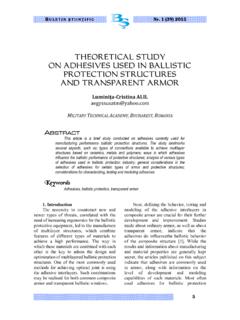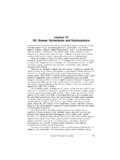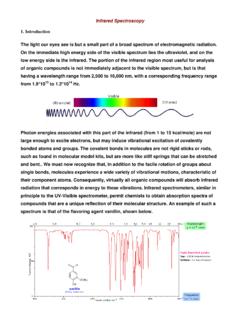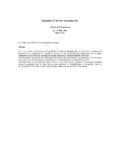Transcription of Safety Data Sheet: DYNASOLVE - Partsmaster
1 Safety data sheet : DYNASOLVE Supercedes Date 11/30/2010 Issuing Date 05/23/2013 1. PRODUCT AND COMPANY IDENTIFICATION Product Name DYNASOLVE Product Code 0382 Recommended use Solvent Chemical nature Petroleum distillates Information on Manufacturer Emergency Telephone Number Partsmaster , Div of NCH Corp. CHEMTREC 800-424-9300 Box 655326 Dallas, TX 75265-5326 2. HAZARD IDENTIFICATION Color Colorless Physical State Liquid Odor Citrus GHS Classification Physical Hazards Flammable liquids Category 4 Health Hazard Aspiration Toxicity Category 1 Acute Inhalation Toxicity - Vapors Category 3 Acute Inhalation Toxicity - Dusts and Mists Category 3 Skin Corrosion/Irritation Category 2 Serious Eye Damage/Eye Irritation Category 2B Respiratory Sensitization Category 1 Skin Sensitization Category 1 Specific target organ systemic toxicity (single exposure) Category 3 Specific target organ systemic toxicity (repeated exposure)
2 Category 2 Other hazards None Labeling Signal Word DANGER Hazard Statements H227 - Combustible liquid H315 - Causes skin irritation H317 - May cause an allergic skin reaction H320 - Causes eye irritation H331 - Toxic if inhaled H334 - May cause allergy or asthma symptoms or breathing difficulties if inhaled H336 - May cause drowsiness or dizziness H304 - May be fatal if swallowed and enters airways H373 - May cause damage to organs through prolonged or repeated exposure Precautionary Statements P280 - Wear protective gloves, protective clothing and eye protection. P210 - Keep away from heat, sparks, open flames or hot surfaces. P270 - Do not eat, drink or smoke when using this product P260 - Do not breathe vapor or mist P271 - Use in a well-ventilated area.
3 P285 - In case of inadequate ventilation wear respiratory protection P264 - Wash face, hands and any exposed skin thoroughly after handling. P272 - Contaminated work clothing should not be allowed out of the workplace P302+ P352 - IF ON SKIN: Wash with plenty of soap and water P333 - If skin irritation or rash occurs get medical attention. P362 - Take off contaminated clothing and wash before reuse P305 + P351 + P338 - IF IN EYES: Rinse cautiously with water for several minutes. Remove contact lenses, if present and easy to do. Continue rinsing. P337 + P313 - If eye irritation persists, get medical attention. P304 + P340 - IF INHALED: Remove person to fresh air and keep at rest in a position comfortable for breathing.
4 P342 + P311 - If experiencing respiratory symptoms, call a physician P301+ P330 + P331 - IF SWALLOWED: Rinse mouth. Do NOT induce vomiting. Call a physician if unwell. P403 + P233 - Store in a well-ventilated place. Keep container tightly closed P501 - Dispose of contents and container in accordance with applicable regulations. Page 1 / 53. COMPOSITION / INFORMATION ON INGREDIENTS component CAS-No Weight % Petroleum distillates, hydrotreated light 64742-47-8 60-100 D-Limonene 5989-27-5 15-40 4. FIRST AID MEASURES General advice Avoid contact with skin, eyes and clothing. Avoid breathing vapors or mists. Eye Contact Rinse thoroughly with plenty of water, also under the eyelids. Get medical attention if irritation develops and persists.
5 Skin Contact Wash off immediately with plenty of water for at least 15 minutes. Remove contaminated clothing and shoes. Get medical attention if irritation develops and persists. Wash contaminated clothing before re-use. Inhalation Move to fresh air. In case of shortness of breath, give oxygen. If not breathing, give artificial respiration. Get medical attention immediately. Ingestion Drink 1 or 2 glasses of water. Do NOT induce vomiting. Get medical attention immediately. Never give anything by mouth to an unconscious person. Notes to physician May cause sensitization of susceptible persons. 5. FIRE-FIGHTING MEASURES Flash Point 141 F / 61 C Method Closed cup Flammability Limits in Air % Solvent mixture.
6 Upper Lower Suitable Extinguishing Media Foam. Water spray. Carbon dioxide (CO2). Dry chemical. Use extinguishing measures that are appropriate to local circumstances and the surrounding environment. Specific hazards arising from the chemical Combustible Liquid. Solvent vapors are heavier than air and may spread along floors. Vapors may ignite and explode. Material can create slippery conditions. Protective Equipment and Precautions for Firefighters As in any fire, wear self-contained breathing apparatus pressure-demand, MSHA/NIOSH (approved or equivalent) and full protective gear. NFPA Health 2 Flammability 2 Instability 0 HMIS Health 2 Flammability 2 Instability 0 6. ACCIDENTAL RELEASE MEASURES Personal Precautions Use personal protective equipment.
7 Ensure adequate ventilation. Remove all sources of ignition. Take precautionary measures against static discharges. Material can create slippery conditions. Environmental Precautions Do not flush into surface water or sanitary sewer system. Methods for Containment Contain spillage, soak up with non-combustible absorbent material, ( sand, earth, diatomaceous earth, vermiculite) and transfer to a container for disposal according to local / national regulations (see section 13). Methods for Cleaning Up Use clean non-sparking tools to collect absorbed material. Pick up and transfer to properly labeled containers. Neutralizing Agent Not applicable. 7. HANDLING AND STORAGE Handling Avoid contact with skin, eyes and clothing.
8 Avoid breathing vapors or mists. Storage Keep away from heat and sources of ignition. Store in original container. Keep containers tightly closed in a dry, cool and well-ventilated place. Storage Temperature Minimum 35 F / 2 C Maximum 120 F / 49 C Storage Conditions Indoor X Outdoor Heated Refrigerated 8. EXPOSURE CONTROLS / PERSONAL PROTECTION Exposure Guidelines component ACGIH TLV OSHA PEL NIOSH Petroleum distillates, hydrotreated light 5 mg/m3 as oil mist 10 mg/m3 as oil mist No data available D-Limonene No data available No data available No data available Engineering Measures Ensure adequate ventilation, especially in confined areas. Where reasonably practicable this should be achieved by the use of local exhaust ventilation and good general extraction.
9 Personal Protective Equipment Eye/Face Protection Safety glasses with side-shields. 0382 - DYNASOLVE0382 - DYNASOLVE0382 - DYNASOLVE0382 - DYNASOLVEI ssuing Date 05/23/2013 Issuing Date 05/23/2013 Issuing Date 05/23/2013 Issuing Date 05/23/2013 Page 2 / 5 Skin Protection Wear suitable protective clothing, Impervious gloves. Respiratory Protection In case of inadequate ventilation wear respiratory protection. When workers are facing concentrations above the exposure limit they must use appropriate certified respirators. General Hygiene Considerations Wear protective gloves/clothing. Ensure that eyewash stations and Safety showers are close to the workstation location. Remove and wash contaminated clothing before re-use.
10 9. PHYSICAL AND CHEMICAL PROPERTIES Physical State Liquid Viscosity Non viscous Color Colorless Odor Citrus Odor Threshold Not applicable Appearance Transparent pH No data available Specific Gravity Evaporation Rate (Butyl acetate=1) Percent Volatile (Volume) 100 VOC Content (%) 100 VOC Photoreactive (Y/N) Yes VOC Content (g/L) 819 Vapor Pressure mmHg @ 70 F Vapor Density (Air = ) Solubility Negligible n-Octanol/Water Partition No data available Melting Point/Range Decomposition Temperature No data available Boiling Point/Range 424 F / 218 C Flammability (solid, gas) No data available Flash Point 141 F / 61 C Method Closed cup Autoignition Temperature No information available.






